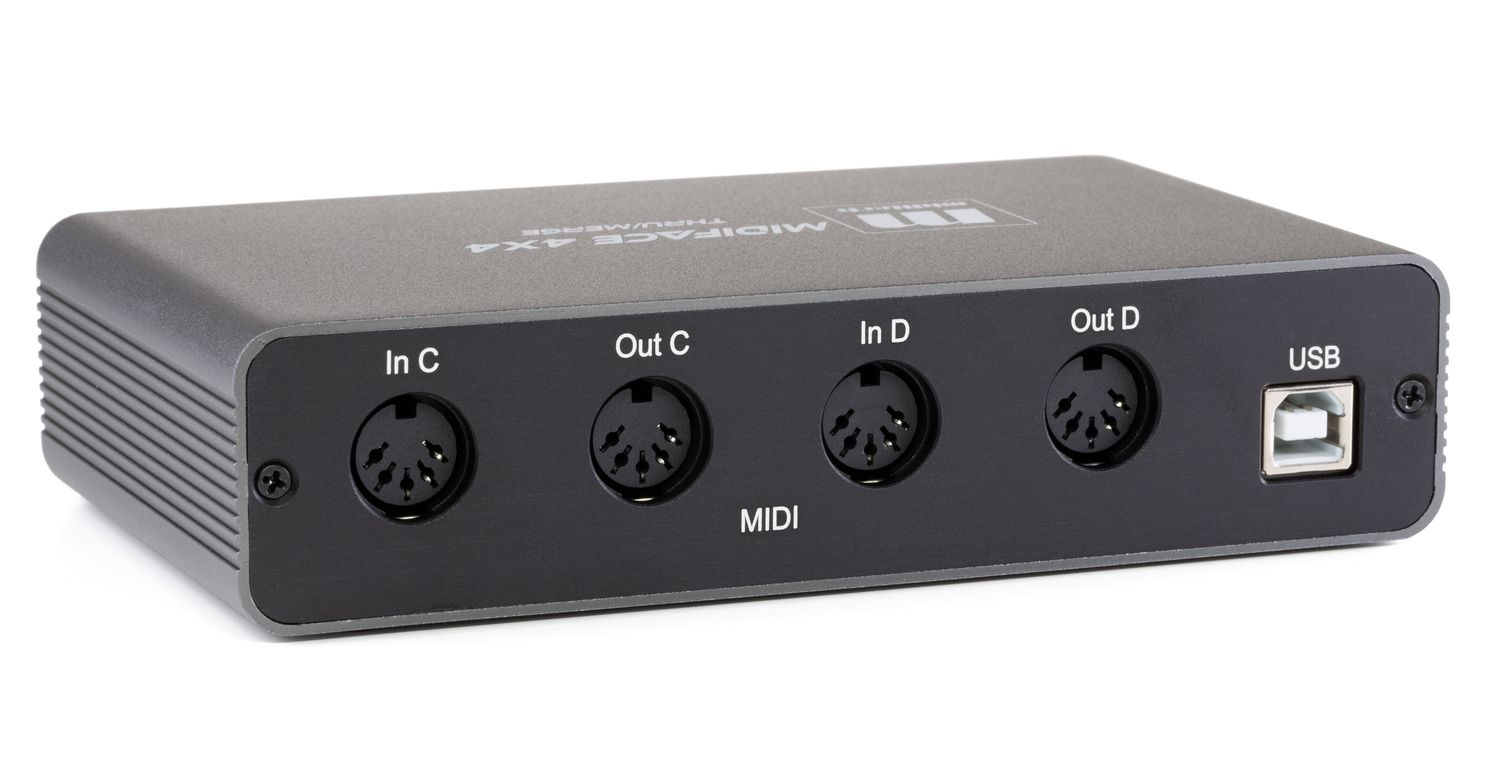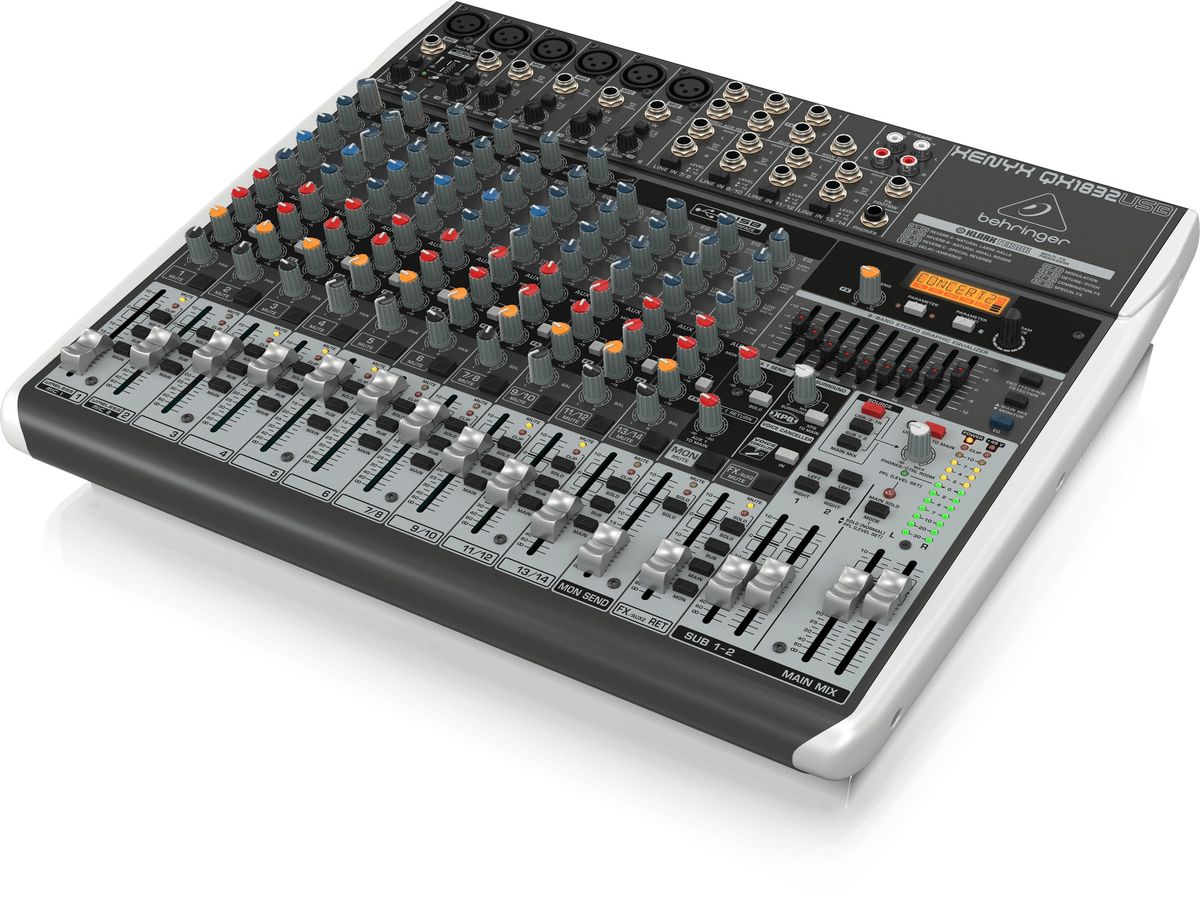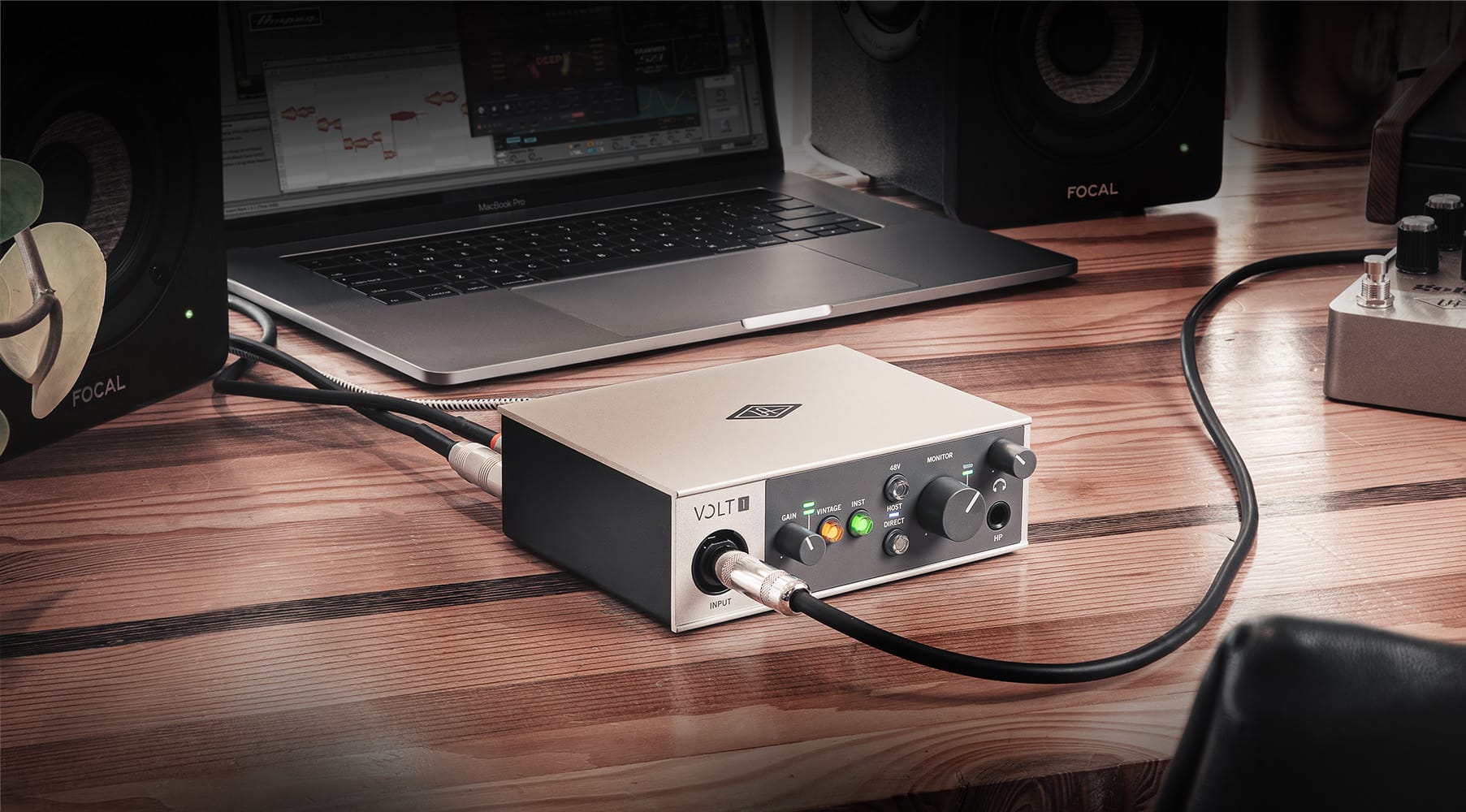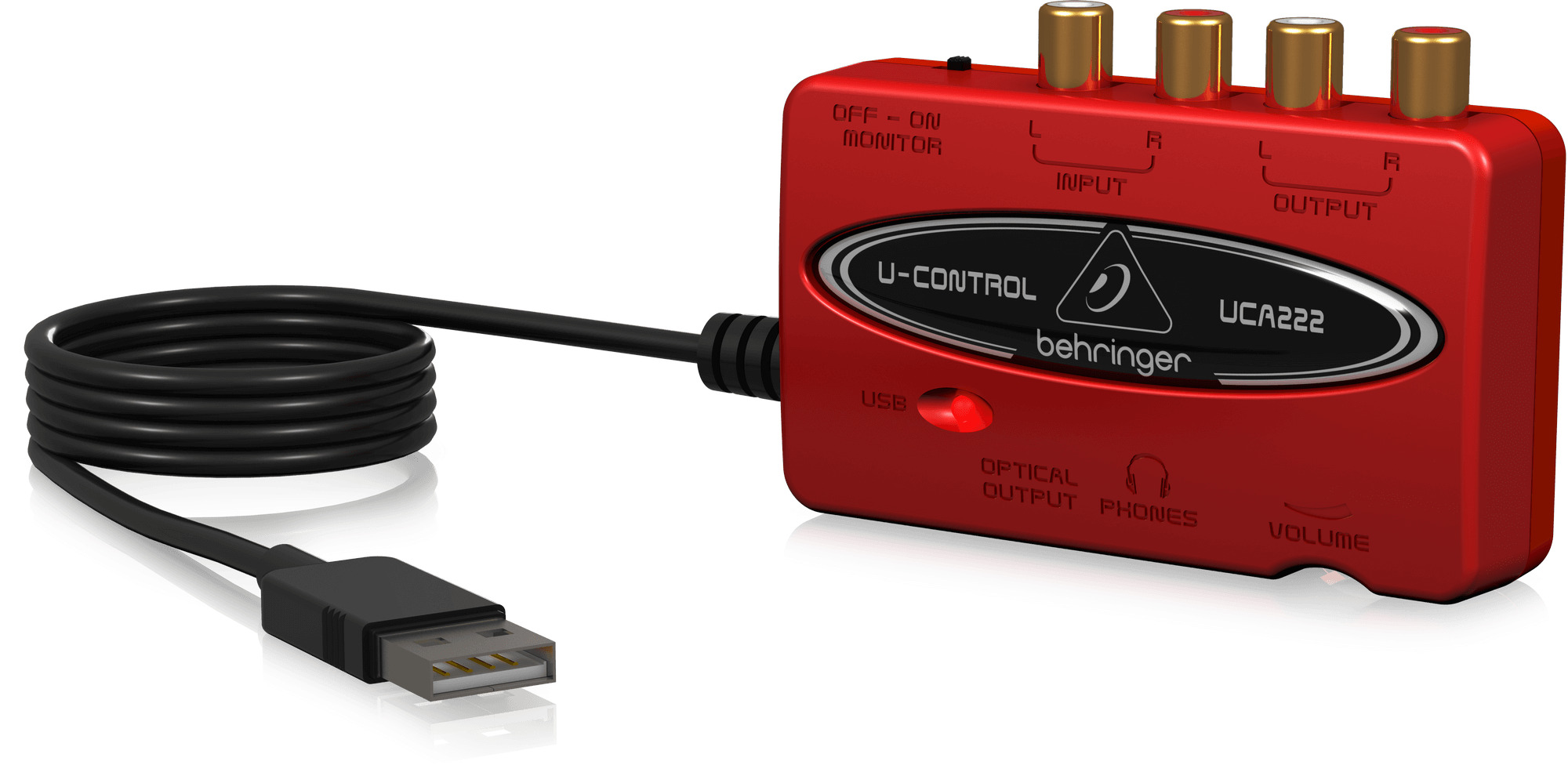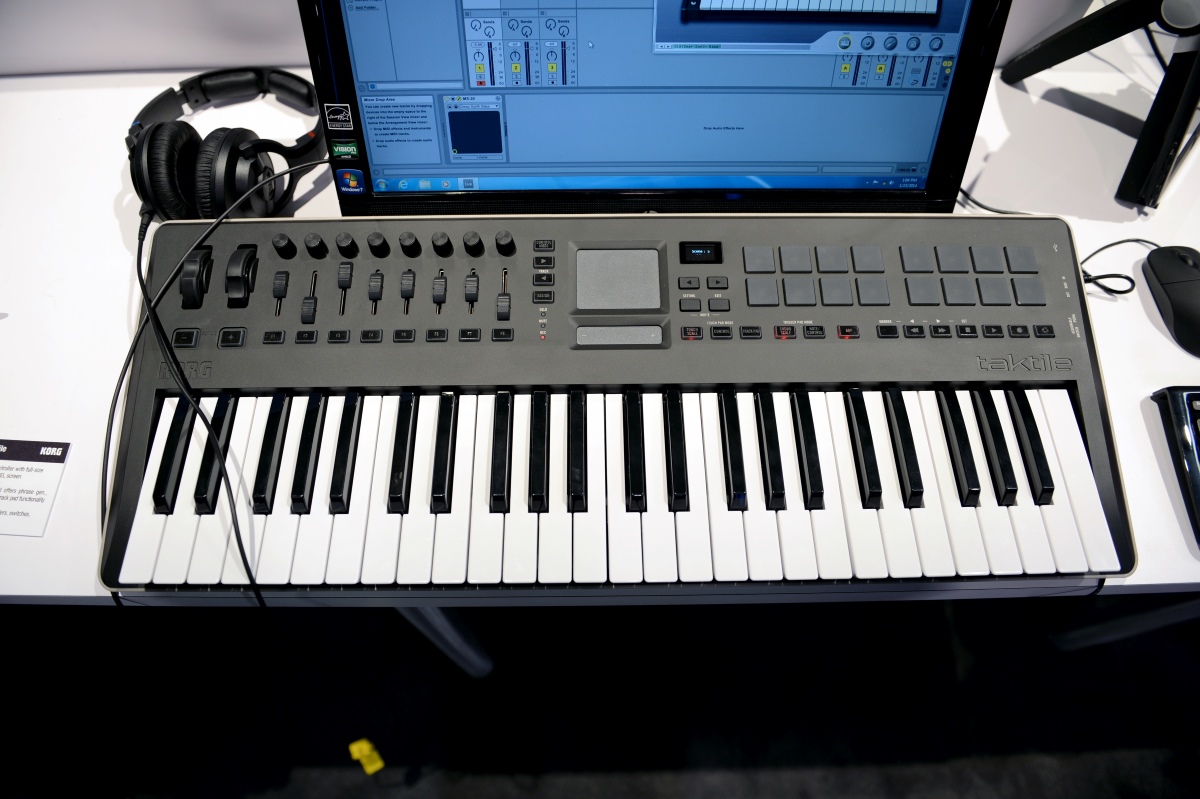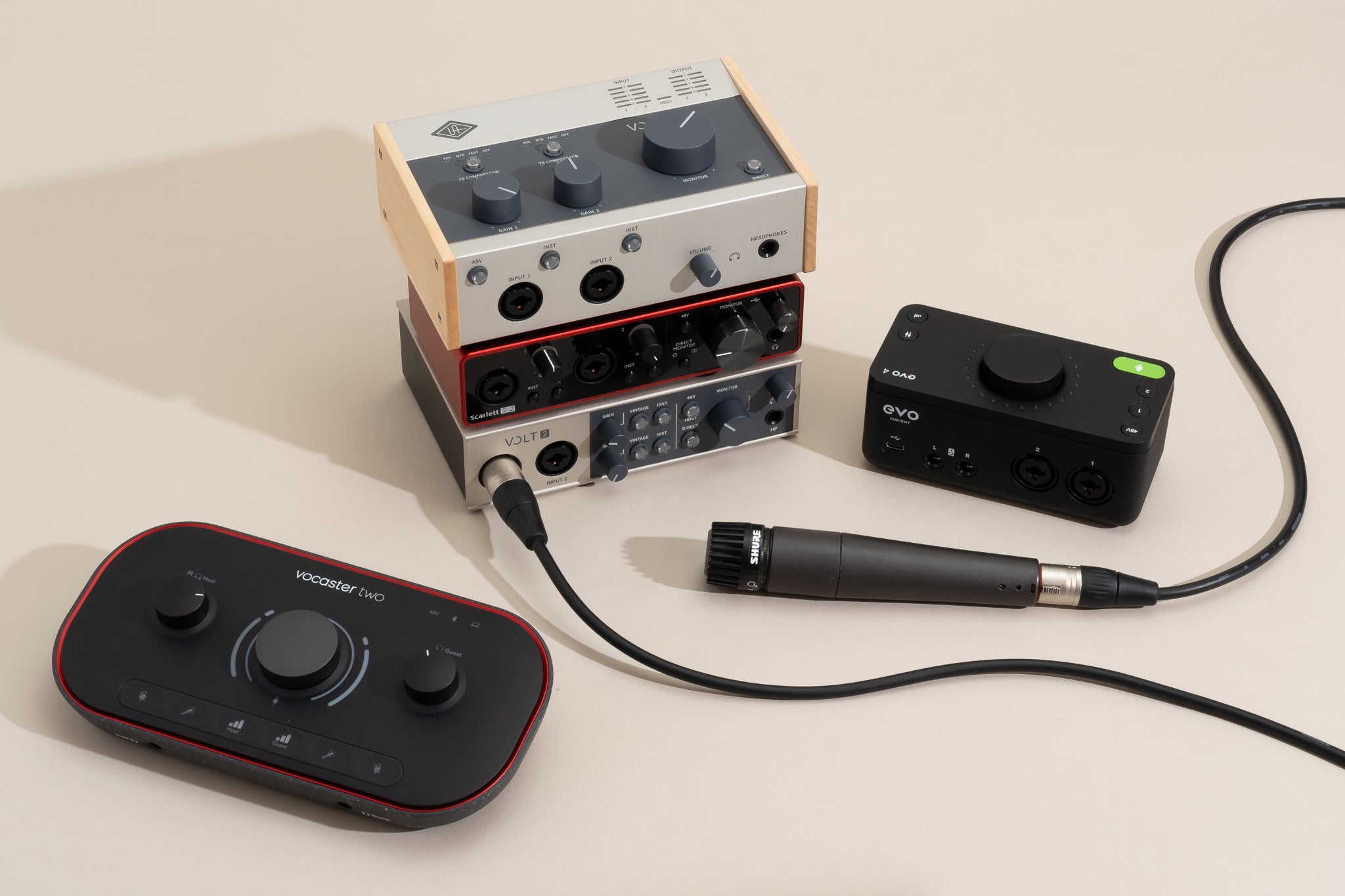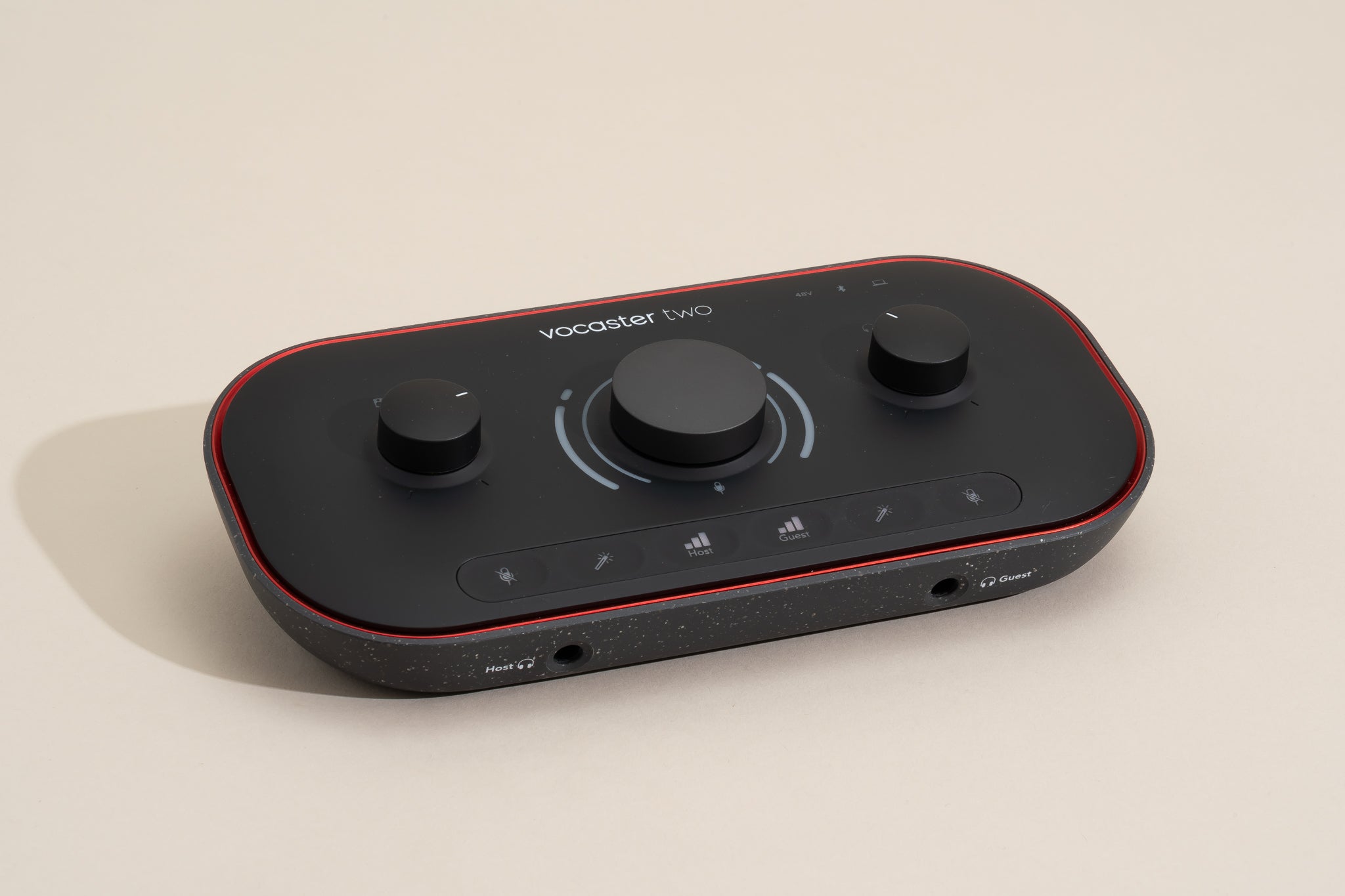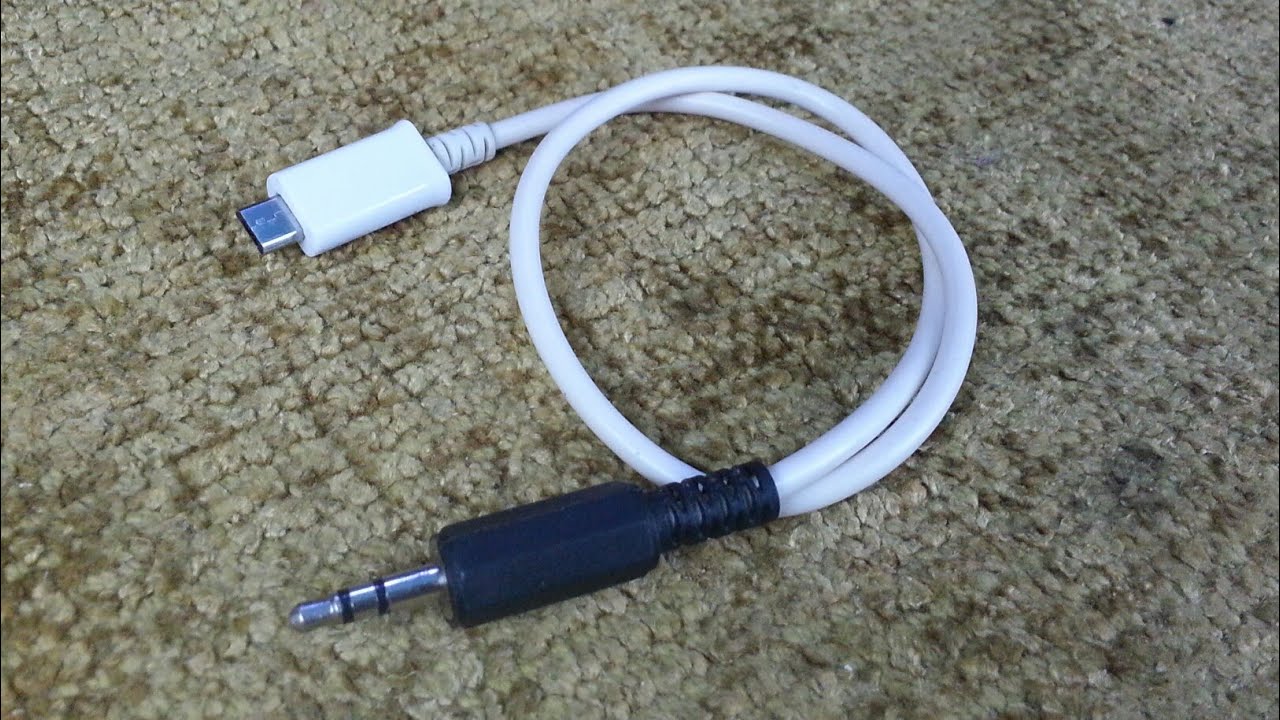Home>Production & Technology>MIDI>How To Attach USB MIDI To 5-Pin MIDI Interface
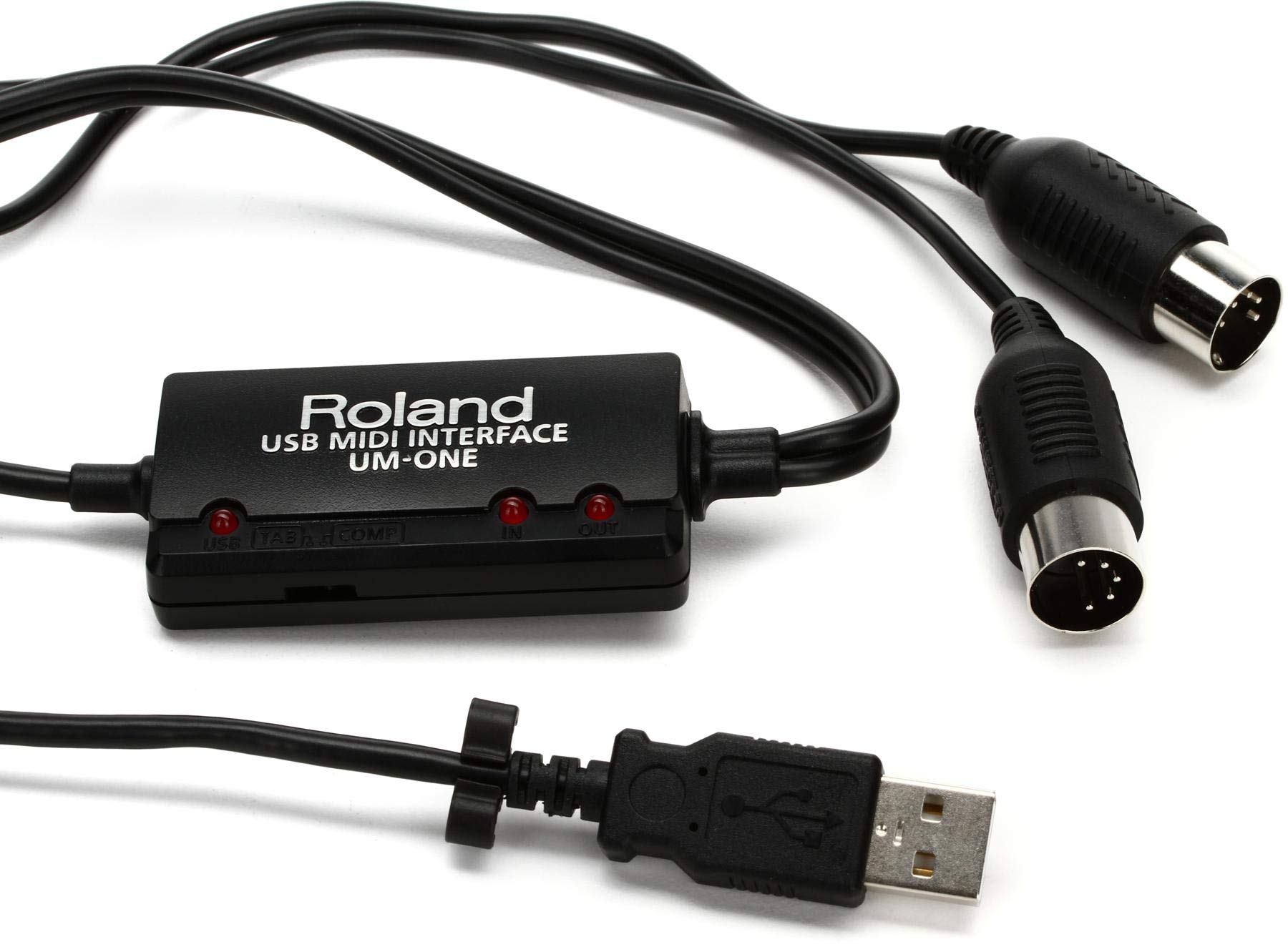

MIDI
How To Attach USB MIDI To 5-Pin MIDI Interface
Modified: March 9, 2024
Learn how to easily connect a USB MIDI device to a 5-pin MIDI interface. Follow our step-by-step guide to set up your MIDI connections. Ideal for MIDI enthusiasts and music producers.
(Many of the links in this article redirect to a specific reviewed product. Your purchase of these products through affiliate links helps to generate commission for AudioLover.com, at no extra cost. Learn more)
Table of Contents
Introduction
In the realm of music production and performance, MIDI (Musical Instrument Digital Interface) technology serves as a cornerstone, enabling seamless communication between musical instruments, controllers, and software. With the evolution of MIDI connectivity, musicians and producers have witnessed the transition from traditional 5-pin MIDI connections to the convenience of USB MIDI. This shift has not only streamlined the process of connecting MIDI devices but has also opened up a world of possibilities for integrating digital audio workstations (DAWs) and MIDI controllers.
Understanding the nuances of USB MIDI and 5-pin MIDI interfaces is essential for anyone delving into the world of music production, whether as a hobbyist or a professional. While USB MIDI offers a modern, plug-and-play approach, 5-pin MIDI interfaces have long been the standard for connecting musical instruments and controllers. By bridging the gap between these two technologies, musicians can maximize the potential of their equipment and create seamless, integrated setups that cater to their specific needs.
In this comprehensive guide, we will explore the intricacies of attaching USB MIDI to 5-pin MIDI interfaces, shedding light on the necessary equipment, connection methods, and troubleshooting tips. Whether you are a seasoned music producer seeking to expand your setup or a newcomer eager to harness the power of MIDI connectivity, this guide will equip you with the knowledge and confidence to navigate the merging worlds of USB MIDI and 5-pin MIDI interfaces.
Let's embark on this journey of discovery, unraveling the intricacies of MIDI connectivity and empowering you to harness the full potential of your musical arsenal.
Understanding USB MIDI and 5-Pin MIDI
In the landscape of music technology, MIDI serves as the universal language that facilitates seamless communication between musical instruments, controllers, and software. Traditionally, MIDI connections were established using 5-pin DIN connectors, a standard that has been prevalent for decades. However, the emergence of USB MIDI has revolutionized the way musicians and producers interact with their equipment, offering a modern and versatile alternative.
USB MIDI
USB MIDI, as the name suggests, utilizes USB (Universal Serial Bus) connections to transmit MIDI data between devices. This technology has gained widespread adoption due to its plug-and-play functionality and compatibility with a myriad of modern computing devices. By leveraging USB MIDI, musicians can effortlessly connect MIDI controllers, keyboards, and other devices directly to computers, tablets, and smartphones, eliminating the need for specialized MIDI interfaces or sound modules.
One of the key advantages of USB MIDI is its simplicity and convenience. With USB connectivity becoming ubiquitous in modern music production setups, integrating MIDI devices into a digital audio workstation (DAW) or music software has never been easier. Additionally, USB MIDI offers improved power supply capabilities, allowing certain MIDI controllers to draw power directly from the connected device, eliminating the need for external power sources.
5-Pin MIDI
In contrast, 5-pin MIDI interfaces rely on the traditional 5-pin DIN connectors to establish MIDI connections. This classic approach has been a staple in the music industry for decades, providing a robust and reliable means of transmitting MIDI data between instruments, synthesizers, and other hardware. While 5-pin MIDI may seem less convenient compared to USB MIDI, it remains a prevalent standard in professional audio setups and live performances.
One notable advantage of 5-pin MIDI interfaces is their robustness and proven reliability. The physical connectors and cables used in 5-pin MIDI setups are known for their durability, making them well-suited for stage performances and studio environments where ruggedness is paramount. Additionally, 5-pin MIDI interfaces often feature multiple MIDI input and output ports, allowing for extensive connectivity and routing options in complex setups.
Bridging the Gap
As technology continues to evolve, the coexistence of USB MIDI and 5-pin MIDI interfaces has become increasingly relevant. Many modern MIDI controllers and synthesizers offer dual connectivity options, accommodating both USB MIDI and traditional 5-pin MIDI connections. This flexibility empowers musicians to seamlessly integrate their equipment into diverse setups, whether they are leveraging the convenience of USB MIDI in a studio environment or relying on the robustness of 5-pin MIDI for live performances.
Understanding the nuances of USB MIDI and 5-pin MIDI interfaces is crucial for navigating the ever-expanding landscape of music technology. By embracing the strengths of both technologies, musicians and producers can harness the full potential of their MIDI devices, creating versatile and resilient setups that cater to their specific needs and preferences. Whether you are delving into music production as a hobby or pursuing it as a professional endeavor, the synergy between USB MIDI and 5-pin MIDI interfaces opens up a world of possibilities, empowering you to craft and express your musical vision with unparalleled flexibility and creativity.
Necessary Equipment
When it comes to bridging the gap between USB MIDI and 5-pin MIDI interfaces, having the right equipment at your disposal is paramount. Whether you are looking to connect a USB MIDI controller to a traditional MIDI synthesizer or integrate a 5-pin MIDI device into a modern digital audio workstation (DAW), the following essential components will pave the way for seamless connectivity and optimal performance.
1. USB MIDI Controller or Device
The cornerstone of any USB MIDI to 5-pin MIDI interface setup is a USB MIDI controller or device. This could be a MIDI keyboard, pad controller, or any other MIDI-enabled device equipped with USB connectivity. When selecting a USB MIDI controller, consider factors such as the number of keys or pads, control options, and compatibility with your preferred music software or hardware.
2. 5-Pin MIDI Interface or Cable
To establish a connection between your USB MIDI device and a 5-pin MIDI interface, you will need a reliable 5-pin MIDI interface or cable. This component serves as the bridge between modern USB-equipped devices and traditional MIDI hardware, enabling seamless communication and data transfer. Whether opting for a standalone 5-pin MIDI interface or a specialized USB-to-MIDI adapter cable, ensure that it meets the necessary technical specifications and provides robust connectivity.
3. Computer or Mobile Device
For USB MIDI connectivity, a computer or mobile device equipped with USB ports is essential. This serves as the hub for connecting and integrating USB MIDI controllers into your music production setup. Whether you prefer working on a desktop computer, laptop, or mobile device, ensure that it meets the system requirements for your chosen music software and provides reliable USB connectivity for seamless MIDI integration.
4. MIDI-Capable Hardware or Software
In the case of integrating 5-pin MIDI devices into a modern setup, such as a digital audio workstation (DAW) or MIDI-enabled hardware, having MIDI-capable equipment or software is crucial. This may include MIDI synthesizers, drum machines, audio interfaces with MIDI I/O, or software instruments and effects that support traditional MIDI connections. Ensure that your chosen hardware or software provides robust MIDI functionality and compatibility with 5-pin MIDI interfaces.
5. Optional: USB-to-MIDI Adapter
In scenarios where direct 5-pin MIDI connectivity is not feasible, opting for a high-quality USB-to-MIDI adapter can offer a convenient solution. These adapters are designed to convert USB MIDI signals to traditional 5-pin MIDI format, allowing seamless integration with a wide range of MIDI hardware. When selecting a USB-to-MIDI adapter, prioritize compatibility, latency performance, and robust build quality to ensure reliable connectivity.
By assembling the necessary equipment outlined above, you can lay a solid foundation for seamlessly integrating USB MIDI devices with traditional 5-pin MIDI interfaces. Whether you are embarking on a studio-based music production journey or preparing for live performances, having the right tools at your disposal empowers you to unlock the full potential of MIDI connectivity, creating a versatile and dynamic musical environment tailored to your unique creative vision.
Connecting USB MIDI to 5-Pin MIDI Interface
Connecting a USB MIDI device to a 5-pin MIDI interface involves bridging the gap between modern USB-equipped controllers and traditional MIDI hardware, enabling seamless communication and data transfer. This process is essential for musicians and producers looking to integrate diverse MIDI devices into a cohesive setup, harnessing the strengths of both USB MIDI and 5-pin MIDI interfaces.
To initiate the connection, begin by identifying the USB MIDI device and the 5-pin MIDI interface or device you intend to connect it to. Ensure that both components are powered off before proceeding with the connection process to prevent any potential electrical issues.
-
USB MIDI Device Preparation: If your USB MIDI device features a USB Type-B port, commonly found on MIDI keyboards and controllers, use a standard USB Type-B to Type-A cable to connect it to a USB port on your computer or USB hub.
-
5-Pin MIDI Interface Setup: For the 5-pin MIDI interface, identify the MIDI input and output ports. Ensure that the interface is powered on and ready to receive and transmit MIDI data.
-
USB-to-MIDI Adapter (If Necessary): In scenarios where direct 5-pin MIDI connectivity is not feasible, such as when connecting a USB MIDI device to a hardware MIDI synthesizer, a high-quality USB-to-MIDI adapter can be utilized. Connect the USB end of the adapter to your computer or USB hub and the MIDI end to the 5-pin MIDI interface.
-
MIDI Channel and Routing Configuration: Once the physical connections are established, configure the MIDI channel and routing settings on both the USB MIDI device and the 5-pin MIDI interface. Depending on the specific devices involved, this may involve setting the MIDI input and output channels to ensure proper communication.
-
Software Integration (Optional): If you are connecting the USB MIDI device to a computer running music production software, ensure that the MIDI input and output settings are configured within the software. This step is crucial for enabling seamless communication between the USB MIDI device and the software, allowing for MIDI data to be transmitted bidirectionally.
-
Testing and Troubleshooting: After completing the physical and software configurations, conduct a thorough testing phase to ensure that MIDI data is transmitted accurately between the USB MIDI device and the 5-pin MIDI interface. Verify that note data, controller messages, and other MIDI information are being transmitted and received as expected.
By following these steps, you can successfully connect a USB MIDI device to a 5-pin MIDI interface, creating a cohesive and integrated MIDI setup that leverages the strengths of both modern USB connectivity and traditional MIDI hardware. This seamless integration empowers musicians and producers to explore new creative possibilities, whether in the studio or on stage, while maintaining robust and reliable MIDI communication across diverse musical devices.
Troubleshooting and Tips
When integrating USB MIDI devices with 5-pin MIDI interfaces, encountering technical challenges or unexpected issues is not uncommon. However, armed with the right troubleshooting strategies and practical tips, you can navigate potential hurdles and ensure a seamless MIDI connectivity experience. Here are essential troubleshooting steps and valuable tips to enhance your USB MIDI to 5-pin MIDI interface integration:
1. Check Cable Connections
Before delving into complex troubleshooting procedures, start by verifying the integrity of your cable connections. Ensure that USB and MIDI cables are securely connected to their respective ports, minimizing the risk of intermittent connectivity or data transmission issues. Additionally, inspect the cables for any signs of damage or wear that could impede proper signal transfer.
2. Verify Power Supply
For USB MIDI devices that rely on bus power from the connected computer or mobile device, confirm that the power supply is stable and sufficient to operate the device. In the case of standalone MIDI controllers or devices with external power sources, ensure that they are powered on and functioning correctly to facilitate reliable MIDI communication.
3. MIDI Channel and Routing Configuration
Double-check the MIDI channel and routing settings on both the USB MIDI device and the 5-pin MIDI interface. Misconfigured MIDI channels can lead to communication errors and data conflicts. Align the MIDI input and output channels to ensure seamless data transmission between the devices, minimizing the risk of signal interference.
4. Latency and Timing Issues
In digital music production environments, latency and timing discrepancies can arise, impacting the responsiveness and accuracy of MIDI data transmission. Adjust the buffer settings within your music software or MIDI interface to optimize latency performance, reducing the likelihood of timing inconsistencies and input lag.
5. Firmware and Driver Updates
Stay abreast of firmware updates for your USB MIDI devices and driver updates for your 5-pin MIDI interfaces. Manufacturers often release firmware and driver updates to address compatibility issues and enhance overall performance. Regularly updating firmware and drivers can mitigate potential connectivity issues and ensure optimal functionality.
6. Ground Loop and Interference
In setups where multiple MIDI devices and audio equipment coexist, ground loop and electromagnetic interference can disrupt MIDI communication. Employ ground loop isolators and shielded cables to minimize the impact of electrical interference, fostering a clean and stable MIDI signal transmission environment.
7. Signal Flow and Device Compatibility
Consider the signal flow within your MIDI setup and assess the compatibility of your USB MIDI devices and 5-pin MIDI interfaces. Certain MIDI devices may have specific requirements or limitations regarding their compatibility with different interfaces. Ensure that your devices are compatible and that the signal flow aligns with the intended MIDI communication pathways.
By implementing these troubleshooting strategies and adhering to the practical tips provided, you can overcome potential challenges and optimize the integration of USB MIDI devices with 5-pin MIDI interfaces. Embracing a proactive approach to troubleshooting and leveraging valuable tips empowers you to create a robust and reliable MIDI setup that seamlessly bridges the worlds of modern USB connectivity and traditional MIDI hardware.
Conclusion
In conclusion, the convergence of USB MIDI and 5-pin MIDI interfaces represents a pivotal juncture in the evolution of music technology. By delving into the intricacies of connecting USB MIDI devices to traditional 5-pin MIDI interfaces, musicians and producers gain the ability to craft versatile and resilient MIDI setups that cater to their specific creative needs. This seamless integration empowers individuals to harness the strengths of both modern USB connectivity and time-honored MIDI hardware, fostering a dynamic and interconnected musical environment.
The journey of attaching USB MIDI to 5-pin MIDI interfaces begins with a deep understanding of the underlying technologies. USB MIDI, with its plug-and-play convenience and widespread compatibility, offers a modern approach to MIDI connectivity. Conversely, 5-pin MIDI interfaces embody reliability and robustness, making them a staple in professional audio setups and live performances. By bridging the gap between these two technologies, musicians unlock a world of possibilities, seamlessly integrating diverse MIDI devices into cohesive setups that transcend traditional boundaries.
Assembling the necessary equipment, including USB MIDI controllers, 5-pin MIDI interfaces, and MIDI-capable hardware or software, lays the groundwork for successful integration. By leveraging the right tools, individuals can establish robust connections and pave the way for seamless MIDI communication. Whether in a studio environment or on stage, having the essential equipment at hand empowers musicians to unlock the full potential of MIDI connectivity, fostering creativity and innovation.
The process of connecting USB MIDI devices to 5-pin MIDI interfaces involves meticulous attention to detail, from cable connections and MIDI channel configurations to software integration and testing. By following a systematic approach, individuals can ensure that MIDI data is transmitted accurately and reliably, creating a cohesive network of interconnected musical devices.
Moreover, navigating potential challenges and technical issues through effective troubleshooting strategies and practical tips is essential for maintaining a seamless MIDI integration experience. By addressing cable connections, power supply, MIDI channel configurations, latency issues, firmware updates, and interference concerns, individuals can mitigate potential hurdles and optimize the performance of their MIDI setups.
Ultimately, the synergy between USB MIDI and 5-pin MIDI interfaces empowers musicians and producers to explore new creative horizons, whether in the realm of music production, live performance, or artistic experimentation. By embracing the strengths of both technologies and overcoming technical challenges, individuals can foster a musical environment that is versatile, resilient, and conducive to artistic expression.
In essence, the journey of attaching USB MIDI to 5-pin MIDI interfaces is a testament to the ever-evolving landscape of music technology, where tradition and innovation converge to shape the future of musical expression. As musicians continue to push the boundaries of creativity and technological integration, the synergy between USB MIDI and 5-pin MIDI interfaces stands as a testament to the enduring power of MIDI connectivity in shaping the sonic landscapes of tomorrow.

